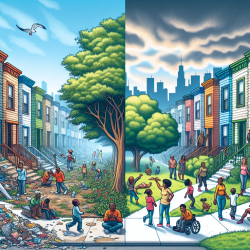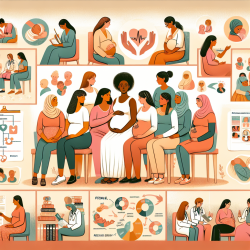As a practitioner in the field of urban development or public health, understanding the complex relationship between neighborhood revitalization and health outcomes is crucial. Recent research titled "Revisiting Revitalization: Exploring How Structural Determinants Moderate Pathways Between Neighborhood Change and Health" sheds light on how vacant housing revitalization can influence health in various ways. This blog post will explore key findings from the study and offer insights on how practitioners can enhance their skills by applying these findings or conducting further research.
The Complex Relationship Between Revitalization and Health
The study highlights that while revitalization efforts often aim to improve physical environments through the regeneration of vacant housing, the outcomes are not straightforward. The Vacants to Value initiative in Baltimore, MD serves as a case study to illustrate how such efforts can impact residents' physical, mental, and social health.
Key Findings:
- Physical Environment: Improved housing conditions and safer neighborhoods were noted benefits. However, chronic exposure to crime and violence remained a concern in some areas.
- Social Environment: Changes in the social fabric due to demographic shifts can lead to decreased social cohesion and trust among residents.
- Cultural Environment: Gentrification can result in cultural displacement and anxiety among long-term residents.
The Role of Structural Determinants
The research emphasizes that structural determinants such as cultural norms, policies, institutions, and practices play a significant role in shaping health outcomes during neighborhood revitalization. These factors determine how material resources are distributed and who benefits from revitalization efforts.
Recommendations for Practitioners:
- Engage with Communities: Establish shared governance structures to ensure equitable decision-making processes that include long-term residents.
- Acknowledge Social Norms: Understand existing community dynamics and work towards aligning revitalization plans with residents' values.
- Create Inclusive Policies: Develop policies that promote wealth generation opportunities for long-term residents, such as homeownership incentives or rent-to-own models.
The Path Forward
The study concludes that vacant housing revitalization should focus on both physical and social environments to achieve healthy communities. By fostering inclusive processes and engaging with local communities, practitioners can help maximize the health benefits of revitalization efforts while minimizing negative impacts like gentrification.
If you're interested in delving deeper into this topic, consider reading the original research paper for a comprehensive understanding of the pathways between neighborhood change and health. To read the original research paper, please follow this link: Revisiting revitalization: exploring how structural determinants moderate pathways between neighborhood change and health.










